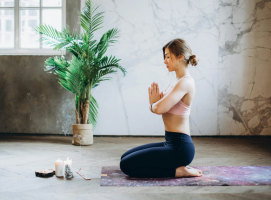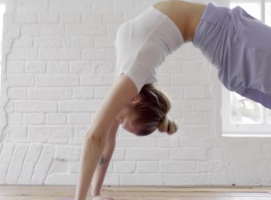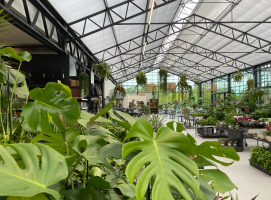Tracing Serenity Through Stone: Early Buddha Statues and the Evolution into Thai Buddha Statues
The serene image of the Buddha—peaceful, contemplative, and wise—is one of the most iconic symbols in global religious art. But how did this visual language evolve over time? What did the Early Buddha Statues look like, and how did they transform into the elegant forms we see in the Thai Buddha Statue tradition? Understanding this journey not only highlights the beauty of Buddhist art but also uncovers the rich tapestry of cultural exchange that shaped it.

The Origins: Early Buddha Statues in India
Buddhism began in the 5th to 6th century BCE with the teachings of Siddhartha Gautama, the historical Buddha. Interestingly, for several centuries after his death, there were no human representations of the Buddha. Instead, early Buddhist art focused on symbolic representations—such as the Bodhi tree, the Dharma wheel, or an empty throne—to signify the presence of the Enlightened One.
It wasn’t until around the 1st century CE that Early Buddha Statues began to emerge. The two principal regions where this shift occurred were Gandhara (modern-day Pakistan and Afghanistan) and Mathura (northern India). These early statues reflect the aesthetics of their regions.
- Gandhara Buddha Statues were heavily influenced by Hellenistic (Greek) art, a result of Alexander the Great’s conquests. These figures often had wavy hair, robes that resembled Roman togas, and more realistic facial features.
- Mathura Buddha Statues, in contrast, retained more traditional Indian art styles. They featured rounder faces, minimalistic robes, and a more symbolic approach to posture and gesture (mudra).
These Early Buddha Statues laid the foundation for the Buddhist iconography that would travel across Asia.
Spreading East: The Journey of Buddhist Art
As Buddhism spread through trade and pilgrimage routes across Central and East Asia, so too did its art. Each region adapted the image of the Buddha to align with its own cultural and artistic values.
China, Korea, and Japan developed their own distinct styles, often influenced by Confucian, Daoist, and Shinto aesthetics. In contrast, when Buddhism made its way into Southeast Asia—especially Thailand—it encountered a unique blend of indigenous beliefs and Hindu-Buddhist syncretism that would evolve into something both beautiful and distinctive.
The Rise of the Thai Buddha Statue
The Thai Buddha Statue is a culmination of centuries of artistic and spiritual evolution. By the time Buddhism reached Thailand (around the 3rd century BCE via missionaries from India and later through Sri Lanka), it was already accompanied by established visual traditions. However, Thailand’s geographical and cultural context gave rise to styles that are uniquely Thai.
Some key characteristics of a traditional Thai Buddha Statue include:
- Slender, elongated features: Thai Buddhas often have an elegant, almost ethereal quality, with high-arched eyebrows, long fingers, and graceful postures.
- Flame-like ushnisha: Unlike earlier depictions, Thai Buddha statues often feature a flame or spire-like structure atop the head, symbolizing enlightenment.
- Multiple mudras (hand gestures): While early statues often focused on a few key mudras, Thai Buddha statues frequently depict a variety of gestures, such as the “Calling the Earth to Witness” or “Meditation” posture.
- Regional variations: Across Thai history—from the Sukhothai to Ayutthaya to Rattanakosin periods—styles of Buddha statues changed. Sukhothai Buddhas, for example, are renowned for their walking posture and spiritual delicacy, while Ayutthaya Buddhas are more solid and imposing.
Cultural Significance of the Thai Buddha Statue
The Thai Buddha Statue is not merely an object of devotion—it’s also a symbol of national identity, artistry, and religious continuity. These statues are found not just in temples but in homes, public spaces, and even on amulets and coins. Each pose and design detail carries deep meaning, often related to episodes in the Buddha’s life or core teachings of the Dharma.
Moreover, Thai artisans view the crafting of a Buddha statue as a sacred act. It’s not simply sculpture—it’s a spiritual endeavor requiring ritual purification, chants, and sometimes even astrological timing. The final product is believed to hold spiritual power and blessing.
Bridging Past and Present
What makes the evolution from Early Buddha Statues to the Thai Buddha Statue so fascinating is the blend of continuity and innovation. While the core image—the serene, meditative Buddha—remains unchanged, the stylistic details reflect the culture, beliefs, and aesthetics of each period and place.
In a modern context, Thai Buddha statues continue to inspire artists and spiritual seekers alike. Museums, temples, and collectors across the world honor this lineage, showcasing how a single spiritual figure can take on many forms while still conveying the same message of peace, compassion, and enlightenment.
Final Thoughts
From the austere stone carvings of Gandhara and Mathura to the graceful gold-leafed statues of Thailand, the journey of the Buddha in art is one of the most remarkable in human history. The Early Buddha Statues laid the sacred groundwork, while the Thai Buddha Statue represents a refined, culturally rich evolution of that legacy. Both serve as eternal reminders of the Buddha’s path and humanity’s ongoing search for inner peace.











